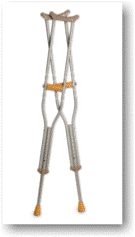Picking Up Equipment
 You should have already arranged for any equipment you need to make life easier at home (e.g. raised toilet seat, bath or shower equipment). It’s a good idea to set up this equipment at home before your surgery. This way, you can practice and learn how to use it beforehand!
You should have already arranged for any equipment you need to make life easier at home (e.g. raised toilet seat, bath or shower equipment). It’s a good idea to set up this equipment at home before your surgery. This way, you can practice and learn how to use it beforehand!
For a handy checklist about the equipment that helps you have a safe recovery at home, see Equipment Checklist.
If all your equipment is not at home yet, don’t forget to pick it up. You might need extra equipment depending on your situation. If you don’t know what equipment you will need, speak to an occupational therapist or a physiotherapist.
You can rent or buy your equipment from:
- Red Cross
- Medical equipment suppliers in the Yellow Pages of the telephone book
- Local drug stores
- Local branch of the Royal Canadian Legion
If you have insurance, you should check about any coverage for equipment, and whether a prescription is required. Patients can borrow equipment from their local Red Cross free of charge (a donation is appreciated when you return the item).
You should also check with your friends and family – they might know where you can find or borrow some equipment! Be sure to inspect the equipment to ensure it is in good working order.